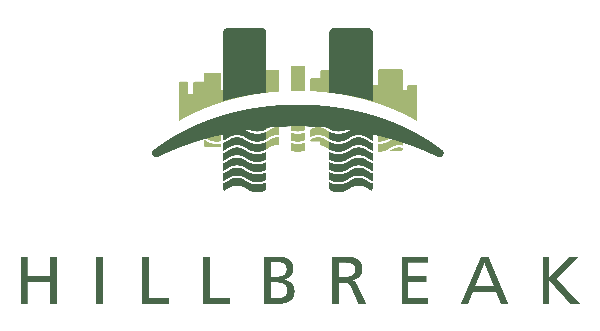PIA Best Practice ESG Principles
The Property Industry Alliance (PIA), the collective group of sector bodies representing more than £1.6tn of commercial property, has published a universal set of responsible investment and ownership principles for the industry.
The best-practice framework, which was co-authored by Miles Keeping of Hillbreak and Peter Cosmetatos, CEO of Commercial Real Estate Finance Europe, sets out seven key principles to advance the social, environmental and economic benefits of responsible business practices across the real estate sector. It is the result of more than 18 months of consultation between the PIA members, which includes the Association of Real Estate Funds, British Council of Offices, British Property Federation, Commercial Real Estate Finance Council, Investment Property Forum, Revo, RICS and Urban Land Institute.
Bill Hughes, chair of the Property Industry Alliance and head of real assets at Legal & General Investment Management, said: “Now more than ever, any business that does not recognise the crucial importance of behaving in a socially and environmentally responsible manner will not be sustainable over the long term.
“Those involved with the built environment have a huge collective responsibility and opportunity to drive real change. While many in our sector are making significant strides forward and having a really positive impact with their ESG policies, there remains a lot of debate and a lack of clear direction as to what best practice looks like, particularly for those who are less well resourced, which leads to fragmented efforts.”
He added: “We have a duty to our communities, our people and our shareholders to self-reflect, to ask ourselves the tough questions and to behave in the right manner in recognition of the fundamental role that we play in society, as well as to ensure our future relevance.”

Miles Keeping, Director, Hillbreak.
Miles Keeping, who co-authored the Principles and who chairs the Green Property Alliance, commented: “These principles are the result of extensive dialogue and self-reflection amongst the PIA members, and mark an important step forward for the industry. Now, for the first time, organisations representing all principal interests in the commercial property sector have taken a unified and collective stance on the centrality of ESG to its activities, which I hope will serve as a galvanising vision for a better future.
“Whilst environmental, social and corporate governance factors have risen in prominence massively in recent years, we must recognise that our sector remains a long way off where it needs to be in delivering positive outcomes for society, alongside financial returns for investors.”
He added: “Hillbreak is proud to have played a central role in bringing forward these principles, and we look forward to advocating them to our clients and the sector more broadly. We encourage consultants and service providers operating across the whole of the real estate value chain to do the same, and we look forward to supporting the PIA to review the impact of the guidance later this year.”
The PIA best practice ESG principles
(1) Climate change and the environment
At every phase of a building’s lifecycle, market participants should minimise both the use of natural resources and their impact on the environment.
a. How have you sought to reduce natural resource use through appropriate specification, reuse of previously used resources, and/or reduced wastage of materials?
b. How does the relevant building make a net positive contribution to the local and global environments, particularly the climate, over its life?
c. To what extent have you driven positive environmental action throughout the supply chain at each relevant phase of the life of the relevant building?
(2) Environmental and social impacts
At every phase of a building’s lifecycle, market participants should understand and take account of the environmental, socioeconomic and community impacts – both positive and negative – of their activities and decisions.
a. How have the environmental effects been assessed so that global and local implications are appropriately accounted for?
b. How have the views of the local community and other external stakeholders been sought and taken into consideration?
c. What are the likely negative and positive impacts on:
• the climate and wider environment
• the local community, local amenity and infrastructure
• those working in or otherwise using the relevant building?
d. How are negative impacts proposed to be mitigated so that the net impact is positive?
e. If any affected constituency is still unhappy, what steps have been taken to understand its concerns and either address them or explain why they could not be addressed?
(3) Balancing profit and wider impacts
At every phase of a building’s lifecycle, market participants should strike a fair and reasonable balance between the profits they seek to take out, on the one hand, and the lasting value they leave behind for those working in, using or otherwise affected by the relevant building, on the other.
a. How and to what extent are financial returns reinvested for the benefit of the environment, local community and those working in or using the relevant building in the interests of its longer-term success?
b. How do you encourage your investors, customers and suppliers to operate in a way which attaches value to environmental, socioeconomic and community considerations?
(4) Health and wellbeing
At every phase of a building’s lifecycle, market participants should measure and improve health and wellbeing within their own organisation and for those working in or using relevant buildings.
a. What information and key performance indicators (KPIs) are collected and used to monitor health and wellbeing and assess the effectiveness of improvement measures?
b. How is consideration given to improving the internal environmental qualities of relevant buildings?
c. What further knowledge or actions could lead to health and wellbeing improvements for those working in or using relevant buildings, including those with visible and/or hidden disabilities?
d. What are the principal barriers and interventions to adopting improvements in health and wellbeing and what steps are you taking to tackle them?
(5) Diversity and inclusion
Market participants should encourage diversity and inclusion, using the influence they can exert through their own people and over their investors, customers and suppliers in a way that balances those different, and sometimes competing, interests.
a. How do you ensure that your people suitably reflect the diversity of the communities in which you operate?
b. How do you promote an inclusive culture that allows everyone to feel that their voices are heard and needs recognised?
c. What steps do you take to ensure that relevant buildings are accessible and user-friendly for people with visible and/or hidden disabilities?
d. How do you encourage your whole supply chain to operate in a way which fosters diversity and inclusion?
(6) Accountability and transparency
Market participants should uphold high standards of governance and always seek to be accountable and transparent to the extent compatible with data protection and privacy rules and the reasonable requirements of commercial confidentiality.
a. How does the organisation ensure and demonstrate accountability for its actions?
b. How transparent are the organisation’s activities and how does the business subject itself to external, independent scrutiny?
c. How does the organisation ensure that potential conflicts of interest are avoided or appropriately managed?
(7) Data
Market participants should take responsibility for the data they collect and use, collecting and storing it appropriately and securely.
a. Does each building have a general data policy covering what is collected and why?
b. Is data collection proportionate to the benefit and expectations of the data subjects and associated stakeholders?
c. Are data security provisions built in to all data collection and use activities, such that confidentiality and privacy expectations can be met?
d. How does the organisation protect itself against the threat of cybercrime and ensure the security of stakeholders’ information?














